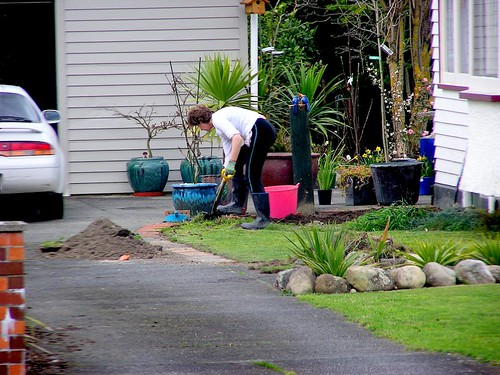Connection in 2020
During this pandemic, many of us have formed a deeper appreciation of social connection. People who used to complain about work have started to miss their colleagues. Being unable to gather for events and holidays has proved frustrating. Even the simple ability to smile at a stranger has taken on new importance.
I think it is safe to say that most of us assumed that we would always be able to connect with others relatively easily, until it was made difficult or impossible through social distancing. I know I certainly did!
Research
From a research perspective, this is a fascinating lens through which to view feelings that promote connection. Gratitude happens to be a very powerful way to feel connected to each other, even when unable to interact in-person. There is a wealth of research showing that both actions and feelings of gratitude act as a “social glue”, binding people together to form a safe and supportive community (Carr, 2015; Ma, Tunney & Ferguson, 2017; McCullough et al.; Wood et al., 2010).
My own research on the subject, completed as part of my MA dissertation under the supervision of Dr. Annalisa Setti, investigated how people of different ages responded to the idea of reading a letter of gratitude aloud (Neubauer, 2019). If you can imagine doing such a thing yourself, you may agree that it sounds like a very intimate experience. Imagine you have written a letter to someone who has made a meaningful and positive impact on your life. Now imagine that you have asked that person to meet with you (in pre-pandemic times, of course). Unknown to this person, you are planning on reading that letter of gratitude aloud to them. Would you do this? How would you feel about reading such a letter aloud to the recipient? Do you think your age would impact these answers?
This was what was under investigation in my study on age-differences and choices made during this letter-writing intervention (known as The Gratitude Visit). In previous studies, The Gratitude Visit had increased feelings of happiness and decreased feelings of depression in adult participants (Gander et al., 2013; Seligman et al., 2005; Seligman, 2011). However, there was also some evidence that this outcome may not be as strong for older adults (Proyer et al., 2014). In my study, 30 younger adults (avg. age approx. 21) and 23 older adults (avg. age approx. 69) were asked to write a letter of gratitude. Next, they recorded their plan of action regarding actually reading the letter to the person they’d written to, as well as their emotional response to the idea.
The results revealed an interesting pattern. Younger adults were more likely than their older counterparts to actually complete a visit (either specifically to read the letter, or just to connect socially). However, older adults reported less negative emotion while imagining visiting the person they’d written to. This meant that, on average, the college-aged participants felt more negative emotions --like anxiety, distress and irritability --connected to the idea of completing The Gratitude Visit than the group of older adults. This finding started to come into focus when further analysis showed that many of the older adults in the sample chose to write gratitude letters to people who had passed away.
This was a small study, and the results should not be overgeneralized as being representative of absolutely everyone. However, when taken together with past research, these findings make it clear that The Gratitude Visit is not as easy to complete for older adults. And yet, the older research participants experienced less negative emotion when imagining being able to actually complete the visit to express gratitude towards someone meaningful to them.
Final Thoughts
Thinking about these results, I find myself interpreting them in a way that is applicable to the past year. The older adults in my study seemed to find benefit in expressing gratitude to someone even if they could not visit them. Of course, we have all had a hard lesson this year about the importance of being physically together. It also seems plausible, however, that feelings of gratitude work to uplift emotion even if it is impossible to turn those feelings into action.
What is gratitude, if not a reflection on the positive influence and connection we have had the privilege of experiencing with others? While feeling gratitude for someone who is absent may be inevitably accompanied by grief, this gratefulness also brings comfort. I further believe that the boost of good feeling we get from gratitude helps us remain open to new connections, even from unexpected sources.
Elyse Neubauer, 28/12/2020
Picture credits, "Gratitude - This Dawn #8" by juliejordanscott is licensed under CC BY 2.0
References
Carr, D. (2015). The Paradox of Gratitude. British Journal of Educational Studies, 63(4), 429–446. https://doi.org/10.1080/00071005.2015.1011077
Gander, F., Proyer, R. T., Ruch, W., & Wyss, T. (2013?). Strength-Based Positive Interventions: Further Evidence for Their Potential in Enhancing Well-Being and Alleviating Depression. https://doi.org/10.1007/s10902-012-9380-0
Ma, L. K., Tunney, R. J., & Ferguson, E. (2017). Does gratitude enhance prosociality?: A meta-analytic review. Psychological Bulletin, 143(6), 601–635. https://doi.org/10.1037/bul0000103
McCullough, M. E., Kilpatrick, S. D., Emmons, R. A., & Larson, D. B. (2001). Is gratitude a moral affect? Psychological Bulletin, 127(2), 249–266. https://doi.org/10.1037/0033-2909.127.2.249
Neubauer, E. (2019). Adults’ Decision-Making Process When Expressing Gratitude: Does Age Impact Choices Made During A “Gratitude Visit” Intervention? (unpublished) [Masters thesis, University College Cork]
Proyer, R. T., Gander, F., Wellenzohn, S., & Ruch, W. (2014). Positive psychology interventions in people aged 50-79 years: Long-term effects of placebo-controlled online interventions on well-being and depression. Aging and Mental Health, 18(8), 997–1005. https://doi.org/10.1080/13607863.2014.899978
Seligman, M. E. P., Steen, T. A., Park, N., & Peterson, C. (2005). Positive psychology progress: empirical validation of interventions. The American Psychologist, 60(5), 410–421. https://doi.org/10.1037/0003-066X.60.5.410
Seligman, M.E.P. (2011). Flourish: A Visionary New Understanding of Happiness and Well-being. New York, NY: Free Press, A Division of Simon & Schuster, Inc.
Wood, A. M., Froh, J. J., & Geraghty, A. W. A. (2010). Gratitude and well-being: A review and theoretical integration. Clinical Psychology Review, 30(7), 890–905. https://doi.org/10.1016/J.CPR.2010.03.005














